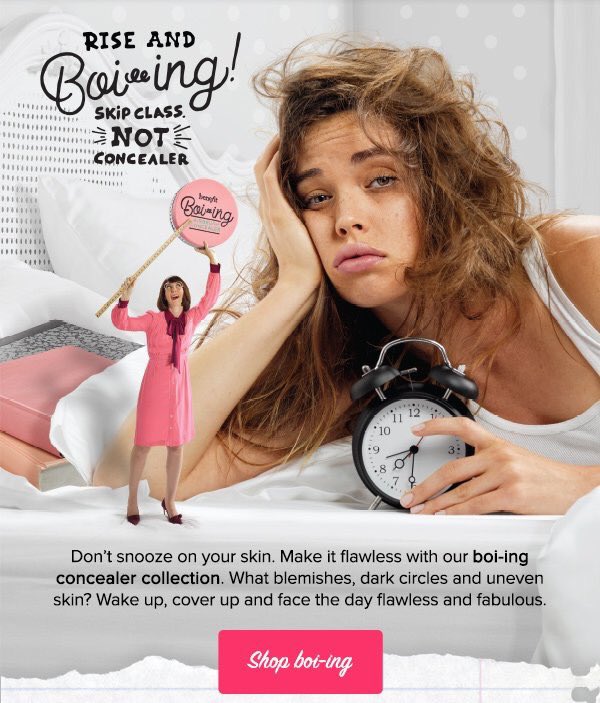5 Errors: Be Considerate of Your Target Audience
Welcome to the third post in our blog series, “Five Errors to Avoid While Advertising”. This series will guide you on what you can look out for while putting your marketing together for your business. Some mistakes are unavoidable and must be learned on an individual basis. On the other hand, there are some that many companies tend to make with their marketing that could be avoided. For our third error, we will discuss companies needing to be considerate of their target audience. What exactly does this mean?
You always want to consider who you are targeting your ad toward in terms of demographics, ranging from age to race all the way to culture. If you do not do your research for where you are planning to advertise, you could inadvertently end up offending a great portion of your customer base.
Segment your target audience to consider the culture and values of the people who will be viewing it. Connect with your audience on a personal level and show that you care. Also, choose a form of marketing that will most appeal to those who will respond to it best. Basic research will go a long way. If you need guidance on how to execute your ad, contact our marketing team.
Here are some examples illustrating how companies failed to advertise to their intended markets or did so very poorly.
Example #1: Yellow Pages

In the example above, Yellow Pages ran a campaign advertising bibimbap, a Korean rice dish. This was a clever way of promoting one of the services the company offers, that is, to advertise local restaurants’ information. This ad could make people decide to order Korean food for takeout and to find a local place, they could use Yellow Pages. When done appropriately and respectfully, highlighting different cultures is not a bad idea. People may view your company in a more positive light for promoting diversity.
In this case, unfortunately, the idea of promoting a cultural dish was not quite executed correctly. The graphic underneath the text is of ramen noodles, a Japanese dish, rather than a Korean one.
Displaying clear ignorance for a part of the culture you are focusing on is heavily frowned upon. Companies take this risk when they do not partake in simple research. Had they looked up what bibimbap was supposed to look like, the advertisers could have avoided this simple but ignorant mistake.
Always check that things are accurate before finalizing campaigns, especially when they involve a particular culture. This is especially true with language translations as well; you do not want a bad campaign to fall onto a faulty translator. Verify accurate information with those within the population, and always receive a second and third confirmation.
Example #2: Dolce & Gabbana

The luxury fashion brand Dolce & Gabbana attempted to appeal to people in China with their Chinese social media advertisements promoting an upcoming fashion show in Shanghai, the nation’s biggest city. However, people immediately admonished the ad for being insensitive to Chinese culture and for being incredibly racist.
The ad depicts a Chinese woman wearing the brand’s garments while attempting to eat Italian foods such as pizza and spaghetti with chopsticks. Chinese folk music plays in the background while an announcer mocks the woman for not knowing how to eat the food. He asks her if it is too big for her to eat. She also sits in what appears to be a traditional Chinese market.
This ad relies on outdated stereotypes people from the West have about China. It seemingly mocks the preconceived notion that China is behind in modernity. The announcer of the ad also uses a stereotypically racist Chinese accent when speaking, especially evident by his butchered pronunciation of “Dolce & Gabbana”.
Due to the massive pushback and criticism from the Chinese public, the brand’s founders had to cancel the planned Shanghai fashion show. Many of their models had backed out and were unwilling to return, forcing them to stop production of the show altogether.
If you ask, “What could they have done differently for this ad,” we would probably suggest not utilizing stereotypes and spending more time understanding to whom your appeal is being made. Do not rely on outdated typecasts or use any for that matter. You will not appeal to a target audience by making fun of them or degrading them.
You can absolutely take a comedic route with your advertisement in other areas of the world. However, consult with locals from the target market to make sure the jokes land positively. When in doubt, don’t do it.
Example #3: Benefit Cosmetics

This last example of ours takes a slightly different route. Benefit Cosmetics released this advertisement, mainly posted in front of store windows. This depicts a tired teenage girl with rumpled hair holding an alarm clock. The caption reads, “Rise and Boi-ing! Skip class NOT concealer”.
While this ad had a positive and comedic feeling, it did not reach the target market as intended. In an era where education is highly valued and sought after by many, especially those who are underprivileged and are not afforded a free education, many young women and their parents were rightfully offended by this advertisement that implies otherwise.
People criticized the advertisement for presenting an archaic myth that people are only good for their looks and that education does not matter for a young person’s developing brain. They called it inappropriate to trivialize and shamed the company across social media and news outlets.
Stores quickly removed the ad, and the company released an apology statement.
What is the moral of this story? Look at what your target audience is currently responding to with their everyday messages in the public eye. Pay attention to what they are passionate about and focus your campaign on their values. If your planned message does not seem to be on par with what your prospective audience is talking about, it may be a good idea to rethink it.
Conclusion
To conclude, always do your research when planning your marketing and advertising for a new campaign. Consult with those within your target audience, and if the message does not resonate or is offensive, come up with something new. You do not want to be the cause of a racist, sexist, or ageist campaign. This will be what people associate you with for years to come.
Take care in coming up with a memorable campaign for your new audience. Listen to what they have to say. Understand their voices and what works best for them. As said earlier, a little research will go a long way in opening new doors and leading to great success for your company.
There are still several more errors companies tend to make with advertising. Join us again in several weeks for the next post in our series, “Don’t Set Yourself Up For Failure”.

